Topics
Category
Era
Tourism in Minnesota, 1835–1940
Cover of "Minnesota’s Ten Thousand Lakes: the Nation’s Summer Playground" brochure, ca. 1926. From “Pamphlets relating to lakes in Minnesota, 1900–” (F604.3), pamphlets collection, Minnesota Historical Society, St. Paul.
Minnesota’s scenic beauty, more than 11,000 lakes, and favorable summer climate have attracted tourists for nearly 200 years. The tourism industry flourished between World War I and 1930, when Minnesota developed its reputation as the Land of 10,000 Lakes and one of the nation’s premier summer vacation destinations.
In 1835, artist George Catlin traveled from St. Louis to Fort Snelling by steamboat. He described the trip as “the Fashionable Tour”—one that provided travelers a “fair sample” of the “Far West.” During the 1840s several panoramas (large unwinding rolls of painted canvas) of the Upper Mississippi toured the East, and steamboat companies began advertising “pleasure excursions” to the Falls of St. Anthony (Owamniyomni).
In June 1854, former President Millard Fillmore led 1,200 prominent Easterners on “the Grand Excursion” celebrating the completion of the first railroad to reach the Mississippi River. Excursionists traveled by train to Rock Island, Illinois, before taking five steamboats to St. Paul, where they visited the Falls of St. Anthony and Fort Snelling.
In the 1850s, Minnesota became a summer haven for wealthy Southerners seeking to escape the heat and diseases that plagued the South. Accompanied by enslaved people, many stayed at the Winslow House, an elegant five-story resort hotel that opened on the east side of St. Anthony Falls in 1857. The Winslow House closed in 1861 with the outbreak of the Civil War.
Following the war, railroads supplanted steamboats as the primary means of tourist transportation and promoted Minnesota as a summer resort destination. Lake Minnetonka, White Bear Lake, and Alexandria developed as resort destinations.
Lake Minnetonka was “The Queen of Minnesota’s Resorts.” Several dozen lodging facilities opened on the lake in the 1870s and 1880s, including three grand hotels built between 1879 and 1882: the Lake Park Hotel (Excelsior), the Hotel St. Louis (Northome), and the Lafayette Hotel (Minnetonka Beach). The grandest was the 300-room Lafayette Hotel designed by Leroy S. Buffington for James J. Hill and his St. Paul, Minneapolis and Manitoba Railroad. Wealthy tourists, many from the South, enjoyed fishing, picnicking, steamboat excursions, daily concerts, lawn and indoor games, and socializing on hotel verandas. Lake Minnetonka’s tourism industry declined following the financial Panic of 1893. By the end of World War I, only six resorts were still operating.
Around the turn of the twentieth century, outdoorsmen discovered Minnesota’s lake country. Many early resorts began when settlers were called on to host parties of fishermen. The Ruttger family is Minnesota’s most noteworthy example. In the late 1890s, Joseph and Josephine Ruttger, homesteaders on Bay Lake, began providing boats, sleeping accommodations, and meals to anglers who arrived at the Deerwood train station. As their reputation spread, the Ruttgers and their four sons embraced the tourism industry. During the 1930s the family operated five Minnesota resorts. As of 2020, Ruttger’s Bay Lake Lodge is the oldest Minnesota resort operated by its founding family.
Three key developments fueled the growth of Minnesota’s tourism industry in the early Twentieth Century: increased leisure time for the middle class, the automobile, and a Back to Nature Movement that encouraged city-dwellers to escape into wilderness settings. The creation of the Minnesota National Forest (name changed to Chippewa in 1928) and Superior National Forest in 1908 and 1909 helped foster Minnesota’s reputation as a North Woods destination. Government officials, regional boosters, Good Roads enthusiasts, resort pioneers, and real estate developers recognized that tourism presented a sustainable alternative to northern Minnesota’s declining lumber industry and unsuccessful attempts to farm the Cutover.
The automobile transformed American life during the first decades of the century. Between 1910 and 1930 the number of registered automobiles in America increased from 500,000 to twenty-six million. The automobile encouraged a sense of adventure and spread the advantages of tourism from society’s elite to the middle class. Auto trips and auto-camping became a popular pastime, and Minnesota communities eager to attract tourists opened municipal campgrounds.
Before the creation of national and state highway systems in the 1920s, Good Roads enthusiasts “blazed” named highways. Many out-of-state tourists arrived by way of two famous national trails: the Jefferson Highway (New Orleans to Winnipeg) and the Yellowstone Trail (Boston to Seattle). In 1921, Minnesota had twenty-eight registered automobile trails. Road construction opened northern Minnesota to recreational development, and by 1930, Minnesota boasted 2,600 miles of paved roads, up from 183 in 1921.
Prior to World War I, railroads played the leading role in promoting Minnesota as a summer vacationland. When the federal government nationalized railroads during the war, railroads ceased advertising the state’s recreational opportunities. Civic organizations and tourism boosters led by Patrick H. McGarry, a resort owner and state senator from Walker, filled the void by creating the Ten Thousand Lakes of Minnesota Association in 1917. Funded by contributions from more than fifty communities, the association undertook a national campaign in 1918, placing ads in major Midwest newspapers and in a dozen national magazines. In 1919, the state legislature created the Land and Lakes Attraction Board. Its annual appropriation of $15,000 (later increased to $50,000) helped fund the association’s annual advertising campaign.
The Ten Thousand Lakes Association enticed Americans to visit “The Land of 10,000 Lakes” until it disbanded in 1933, when the State Tourist Bureau in the Department of Conservation took the lead in advertising Minnesota. The Minnesota Arrowhead Association (created in 1924) and the Paul Bunyan Playground Association (1935) marketed their respective regions.
Tourism exploded following World War I. The number of out-of-state tourists increased from approximately 17,000 in 1917 to nearly one-and-a half million in 1930. Spending by out-of-state tourists grew from approximately $937,000 in 1917 to an estimated eighty-seven million dollars in 1929. The number of resorts increased from about 200 in 1917 to 1,275 in 1931 and then to more than 2,500 in 1940. Many resorts simply consisted of a few housekeeping cabins; others took on the classic configuration of a rustic lodge/dining hall with sleeping cabins. In the late 1910s and 1920s many larger resorts, especially in the Brainerd area, began offering recreational activities for the entire family, including golf, boating, tennis, swimming with waterwheels and waterslides, dancing, children’s programs, and gambling. Ruttger’s Bay Lake Lodge added a nine-hole golf course in 1921, a log dining hall in 1922, and the Green Lantern Dance Hall in 1925.
In the 1910s and 1920s, real estate developers—many from the Twin Cities—platted lakeshore properties for cabin sites. They often built resorts to entertain potential buyers. The Baker-Seaton Realty Company built Grand View Lodge (later listed on the National Register of Historic Places) in 1921 as part of its Gull Lake Park development. In 1920, Thorpe Brothers platted lakeshore on Itasca County’s Deer Lake, built Pinehurst Lodge, and marketed its development in Tulsa, Oklahoma, selling lots and building cabins on what became known as Oklahoma Hill.
By the 1930s, Minnesota promoted itself as “The Summer Playground of the Nation.” As an important part of the state’s economy, tourism provided employment for thousands of area residents, cash markets for area farmers, business for local merchants, and tax revenues for state and local governments.
Bibliography
Coppe, Ivan. “Minnesota Opens Wide Her Gates: Ten Thousand Lakes Association Organized to Make Tourists Welcome.” Western Magazine (May 1918): 170–173.
Corning, Inc., comp. A Report to the Members of the Ten Thousand Lakes of Minnesota Association. St. Paul: [N.p.], 1919?. Available at the Minnesota Historical Society library as G155.M6 C67.
Haidet, Mark. Personal research files.
Mathias N. Koll papers, 1880–1971 (bulk 1910–1934)
Manuscripts Collection, Minnesota Historical Society, St. Paul
http://www.mnhs.org/library/findaids/00113.xml
Description: Koll (1874–1934), of Cass Lake, was one of northern Minnesota’s leading boosters, involved in many promotional organizations including the Ten Thousand Lakes of Minnesota Association, the Minnesota Arrowhead Association, the Minnesota Scenic Highway Association, and the Northern Minnesota Development Association.
“Making Money for the State: Ten Thousand Lakes of Minnesota Association has Justified Its Creation and Existence.” Western Magazine (January 1921): 11–13.
Pamphlet on Resorts and Tourism
Pamphlets Collection, Minnesota Historical Society, St. Paul
Description: The Minnesota Historical Society has a wealth of advertising materials for Minnesota resorts. The collection is particularly strong for the 1920s and 1930s (see especially F614.A22, and F613.S15, F613.D15, F613.M15 at the Minnesota Historical Society library).
Shapiro, Aaron. The Lure of the North Woods: Cultivating Tourism in the Upper Midwest. Minneapolis: University of Minnesota Press, 2013.
Ten Thousand Lakes of Minnesota Association. Annual Reports, 1918–1932. Available at the Minnesota History Center library as HS2511.M6 T3.
Related Resources
Primary
Breezy Point Lodge, Pequot, Minn: Queen Summer Resort of the Northern Minnesota Pines. [Pequot, MN]: 1925(?).
Baker-Seaton Realty Company. Grandview Lodge, Gull Lake, Nisswa, Minn. Minneapolis: Baker-Seaton Realty Company, 1916(?).
Department of the Interior, Division of Motion Pictures. Land of Ten Thousand Lakes 1936.
Record Group 48, Records of the Office of the Secretary of the Interior, 1826–2009. National Archives, Washington, DC.
The Land of Ten Thousand Lakes Over Jefferson Highway, Minnesota. [Minnesota]: N.p., 1920(?).
Minnesota Department of Conservation. Biennial Reports. St. Paul: [Minnesota Department of Conservation], 1934–1940.
OH 79
Minnesota Resort Industry Oral History Project, 1991–2000
Oral History Collection, Minnesota Historical Society, St. Paul
http://collections.mnhs.org/cms/display.php?irn=10469049
Description: Sixteen interviews with current/former resort owners including five interviews with members of the Ruttger family.
Minnesota State Automobile Association. Sparks (periodical, 1914–1940).
Pardee, John Stone. In the Tip of the Famous Arrowhead Country: The Naniboujou Club. Duluth: Naniboujou Club, 1927(?).
Records of Ruttger Resorts, 1887–2003 (bulk 1935–1998)
Manuscripts Collection, Minnesota Historical Society, St. Paul
http://www.mnhs.org/library/findaids/00198.xml
Description: Genealogical records and materials associated with Ruttger’s Bay Lake Lodge and the four other Minnesota resorts and Florida resorts owned and operated by the family.
Secondary
Belasco, Warren James. Americans on the Road: From Autocamp to Motel, 1910–1945. Cambridge, MA: MIT Press, 1979.
Blegen, Theodore C. “The ‘Fashionable Tour’ on the Upper Mississippi.” Minnesota History 20, no. 4 (December 1939): 377–396.
http://collections.mnhs.org/mnhistorymagazine/articles/20/v20i04p377-396.pdf
Heglund, Mae Ruttger. The First 100 Years: Ruttger’s Bay Lake Lodge Centennial Celebration. [N.p.]: Ruttger’s Bay Lake Lodge, 1998.
Heilbron, Bertha L. “Making a Motion Picture in 1848: Henry Lewis on the Upper Mississippi.” Minnesota History 17, no. 2 (June 1936): 131–149.
http://collections.mnhs.org/mnhistorymagazine/articles/17/v17i04p421-436.pdf
Keillor, Steven J. Grand Excursion: Antebellum America Discovers the Upper Mississippi. Afton, MN: Afton Historical Society Press, 2004.
Koutsky, Kathryn Strand, and Linda Koutsky. Minnesota Vacation Days: An Illustrated History. St. Paul: Minnesota Historical Society Press, 2006.
Ogland, James W. Picturing Lake Minnetonka: A Postcard History. St. Paul: Minnesota Historical Society Press, 2001.
Related Images
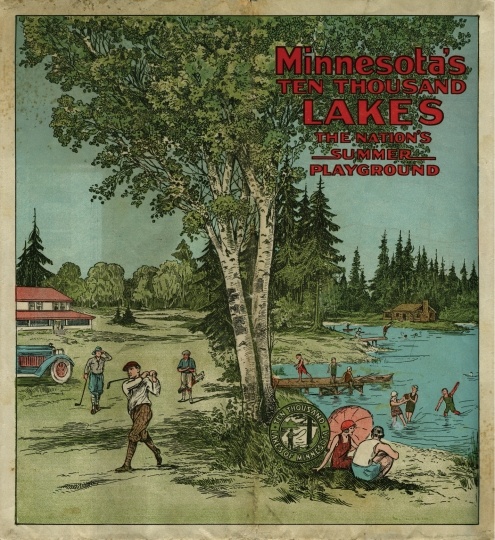
Minnesota tourism brochure
Cover of "Minnesota’s Ten Thousand Lakes: the Nation’s Summer Playground" brochure, ca. 1926. From “Pamphlets relating to lakes in Minnesota, 1900–” (F604.3), pamphlets collection, Minnesota Historical Society, St. Paul.
Holding Location
Articles
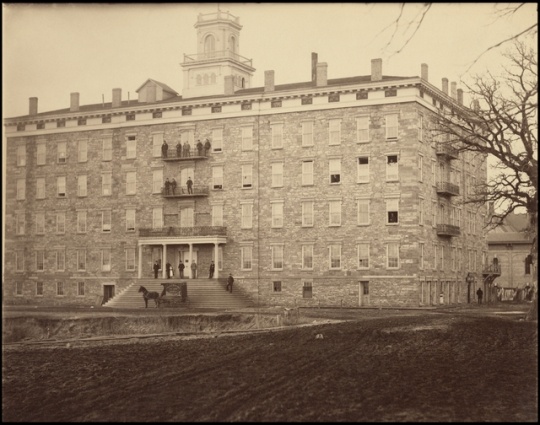
Winslow House Hotel
Public domain
Holding Location
Articles
More Information
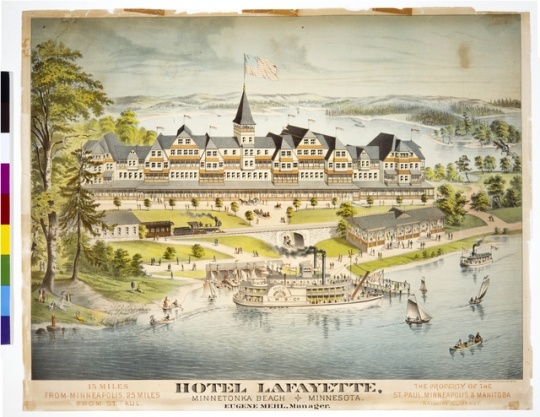
Hotel Lafayette, Minnetonka Beach
Public domain
Holding Location
More Information
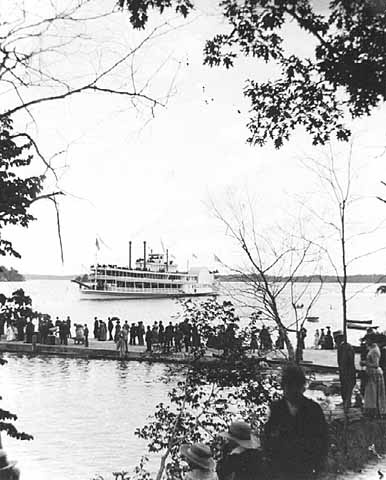
Belle of Minnetonka (steamboat)
Holding Location
Articles
More Information
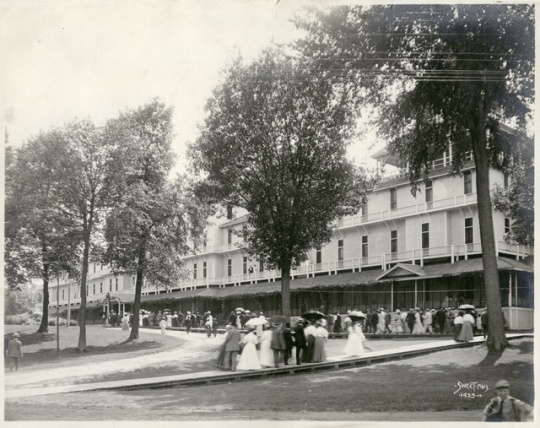
Lake Park Hotel (Tonka Bay Hotel)
Holding Location
Articles
More Information

Cover of a tourism brochure
Holding Location
Articles
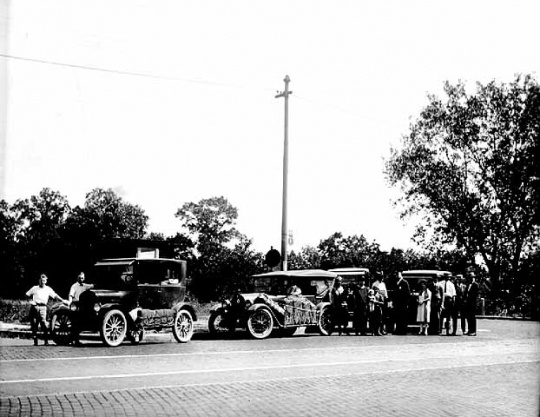
Tourists on the Lake Street bridge, Minneapolis
Holding Location
Articles
More Information
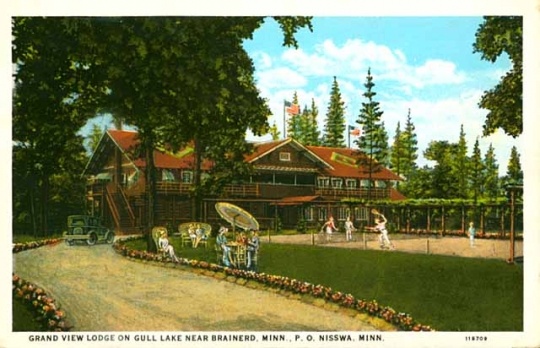
Grand View Lodge near Brainerd
Holding Location
Articles
More Information
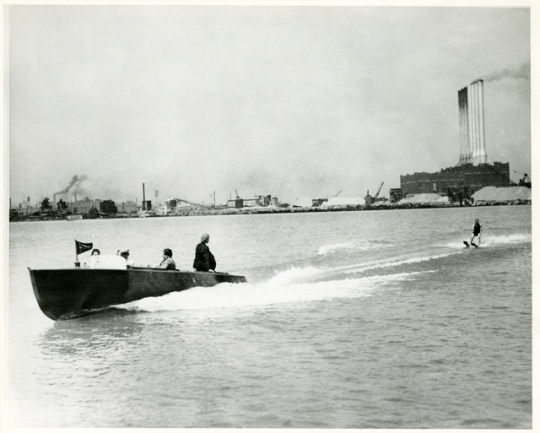
Ralph Samuelson skiing behind a power boat
Holding Location
Articles
More Information
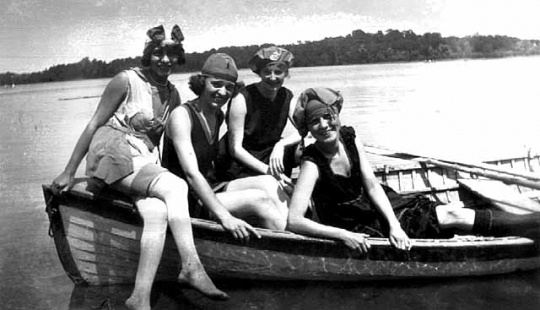
Bessie Stiegler and three other women in a row boat
Holding Location
Articles
More Information
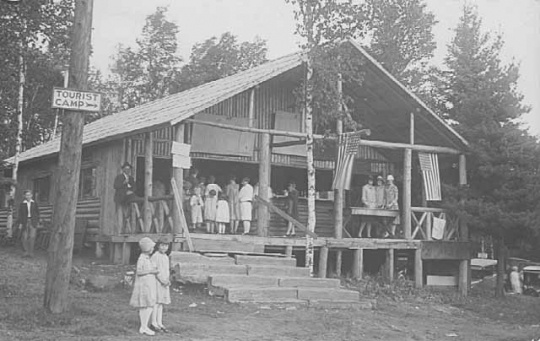
Canteen at a tourist camp
Holding Location
Articles
More Information
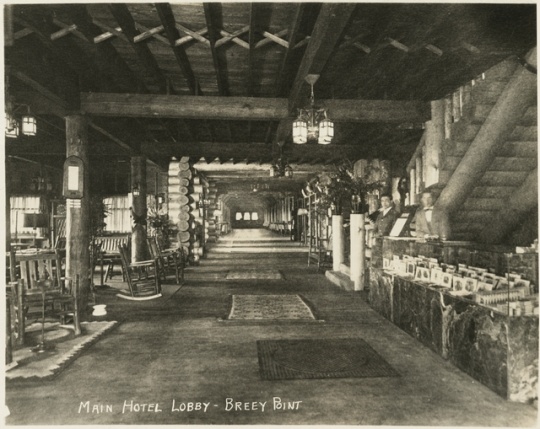
Breezy Point Lodge
Holding Location
Articles
More Information
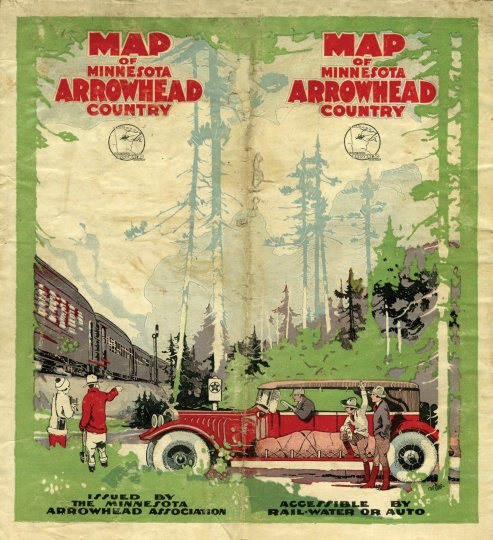
Arrowhead Country tourism brochure
Holding Location
Articles
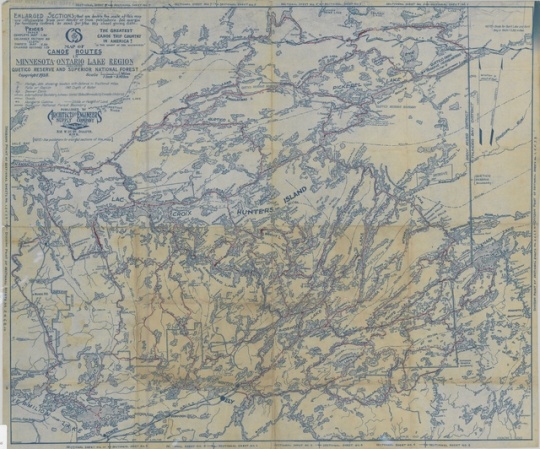
Map of canoe routes in the Minnesota-Ontario lake region
Holding Location
Articles
More Information
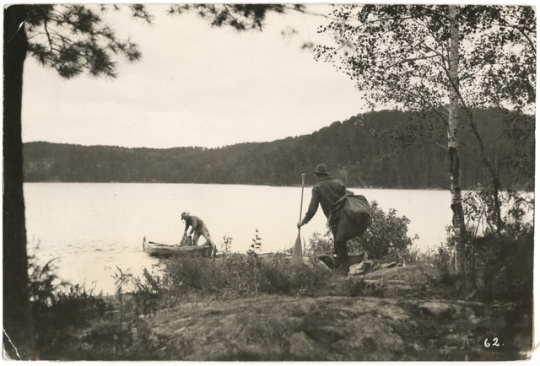
Canoers completing a portage in the Superior National Forest
Holding Location
Articles
More Information
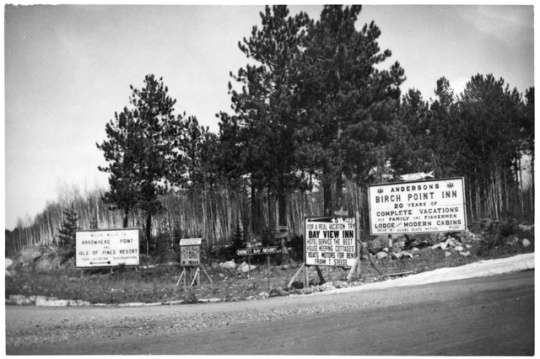
Resort signs along a northern Minnesota road
Holding Location
Articles
More Information
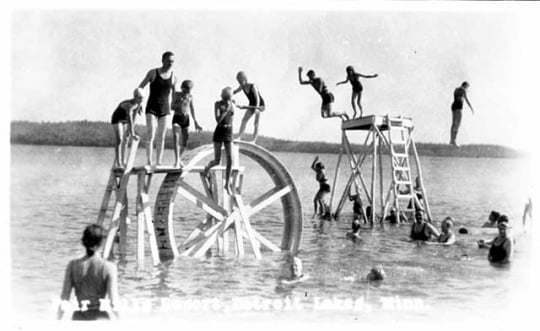
Swimming Fair Hills Resort
Holding Location
Articles
More Information
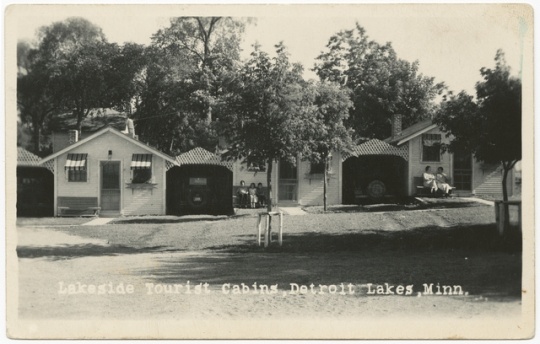
Lakeside tourist cabins, Detroit Lakes
Holding Location
Articles
More Information
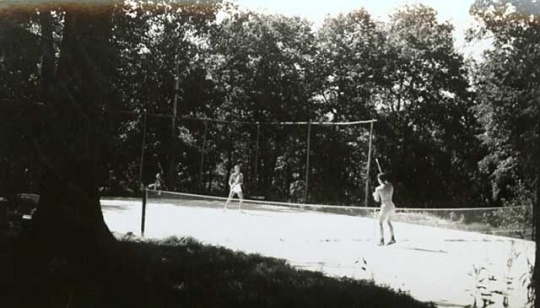
Tennis court at Sherwood Forest Lodge in Gull Lake
Holding Location
Articles
More Information
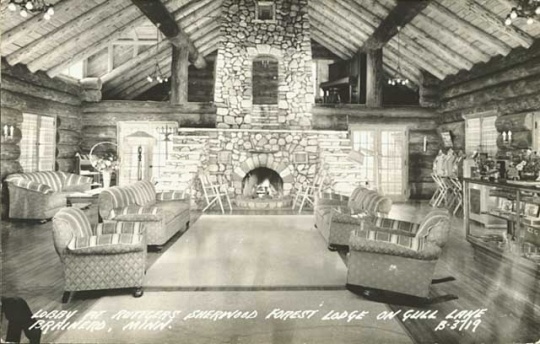
The lobby of Sherwood Forest Lodge
Holding Location
Articles
More Information
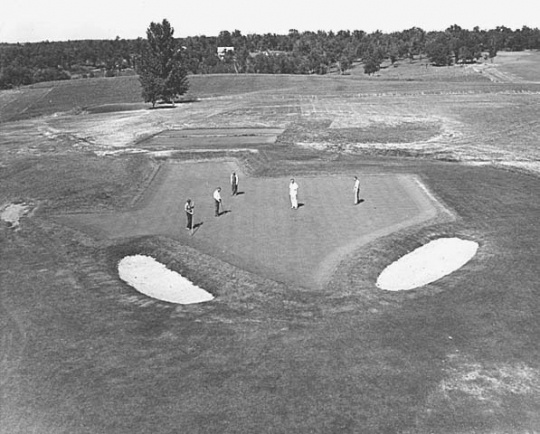
Seventeenth hole at Alexandria Golf Club
Holding Location
Articles
More Information
Related Articles
Turning Point
The Ten Thousand Lakes of Minnesota Association launches a national advertising campaign in 1918 promoting the Land of 10,000 Lakes as a summer playground.
Chronology
1835
1848
1854
1857
1867
1882
1905
1909
1915
1918
1919
1921
1924
1925
1926
1928
1929
1931
1933
1939
Bibliography
Coppe, Ivan. “Minnesota Opens Wide Her Gates: Ten Thousand Lakes Association Organized to Make Tourists Welcome.” Western Magazine (May 1918): 170–173.
Corning, Inc., comp. A Report to the Members of the Ten Thousand Lakes of Minnesota Association. St. Paul: [N.p.], 1919?. Available at the Minnesota Historical Society library as G155.M6 C67.
Haidet, Mark. Personal research files.
Mathias N. Koll papers, 1880–1971 (bulk 1910–1934)
Manuscripts Collection, Minnesota Historical Society, St. Paul
http://www.mnhs.org/library/findaids/00113.xml
Description: Koll (1874–1934), of Cass Lake, was one of northern Minnesota’s leading boosters, involved in many promotional organizations including the Ten Thousand Lakes of Minnesota Association, the Minnesota Arrowhead Association, the Minnesota Scenic Highway Association, and the Northern Minnesota Development Association.
“Making Money for the State: Ten Thousand Lakes of Minnesota Association has Justified Its Creation and Existence.” Western Magazine (January 1921): 11–13.
Pamphlet on Resorts and Tourism
Pamphlets Collection, Minnesota Historical Society, St. Paul
Description: The Minnesota Historical Society has a wealth of advertising materials for Minnesota resorts. The collection is particularly strong for the 1920s and 1930s (see especially F614.A22, and F613.S15, F613.D15, F613.M15 at the Minnesota Historical Society library).
Shapiro, Aaron. The Lure of the North Woods: Cultivating Tourism in the Upper Midwest. Minneapolis: University of Minnesota Press, 2013.
Ten Thousand Lakes of Minnesota Association. Annual Reports, 1918–1932. Available at the Minnesota History Center library as HS2511.M6 T3.
Related Resources
Primary
Breezy Point Lodge, Pequot, Minn: Queen Summer Resort of the Northern Minnesota Pines. [Pequot, MN]: 1925(?).
Baker-Seaton Realty Company. Grandview Lodge, Gull Lake, Nisswa, Minn. Minneapolis: Baker-Seaton Realty Company, 1916(?).
Department of the Interior, Division of Motion Pictures. Land of Ten Thousand Lakes 1936.
Record Group 48, Records of the Office of the Secretary of the Interior, 1826–2009. National Archives, Washington, DC.
The Land of Ten Thousand Lakes Over Jefferson Highway, Minnesota. [Minnesota]: N.p., 1920(?).
Minnesota Department of Conservation. Biennial Reports. St. Paul: [Minnesota Department of Conservation], 1934–1940.
OH 79
Minnesota Resort Industry Oral History Project, 1991–2000
Oral History Collection, Minnesota Historical Society, St. Paul
http://collections.mnhs.org/cms/display.php?irn=10469049
Description: Sixteen interviews with current/former resort owners including five interviews with members of the Ruttger family.
Minnesota State Automobile Association. Sparks (periodical, 1914–1940).
Pardee, John Stone. In the Tip of the Famous Arrowhead Country: The Naniboujou Club. Duluth: Naniboujou Club, 1927(?).
Records of Ruttger Resorts, 1887–2003 (bulk 1935–1998)
Manuscripts Collection, Minnesota Historical Society, St. Paul
http://www.mnhs.org/library/findaids/00198.xml
Description: Genealogical records and materials associated with Ruttger’s Bay Lake Lodge and the four other Minnesota resorts and Florida resorts owned and operated by the family.
Secondary
Belasco, Warren James. Americans on the Road: From Autocamp to Motel, 1910–1945. Cambridge, MA: MIT Press, 1979.
Blegen, Theodore C. “The ‘Fashionable Tour’ on the Upper Mississippi.” Minnesota History 20, no. 4 (December 1939): 377–396.
http://collections.mnhs.org/mnhistorymagazine/articles/20/v20i04p377-396.pdf
Heglund, Mae Ruttger. The First 100 Years: Ruttger’s Bay Lake Lodge Centennial Celebration. [N.p.]: Ruttger’s Bay Lake Lodge, 1998.
Heilbron, Bertha L. “Making a Motion Picture in 1848: Henry Lewis on the Upper Mississippi.” Minnesota History 17, no. 2 (June 1936): 131–149.
http://collections.mnhs.org/mnhistorymagazine/articles/17/v17i04p421-436.pdf
Keillor, Steven J. Grand Excursion: Antebellum America Discovers the Upper Mississippi. Afton, MN: Afton Historical Society Press, 2004.
Koutsky, Kathryn Strand, and Linda Koutsky. Minnesota Vacation Days: An Illustrated History. St. Paul: Minnesota Historical Society Press, 2006.
Ogland, James W. Picturing Lake Minnetonka: A Postcard History. St. Paul: Minnesota Historical Society Press, 2001.






















